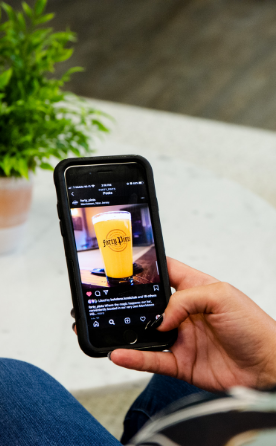The Ultimate Impact of Psychology of Colors in Marketing
Have you ever wondered how colors inflict different moods or emotions on an individual? The psychology of colors plays a crucial role in creating effective marketing campaigns. Understanding how to leverage colors can enhance the effectiveness of your marketing strategies. In this guide, we’ll explore the fundamentals of color psychology and provide actionable tips for using colors to boost your marketing efforts.

Digital Marketing
Capture Leads, Generate Sales & Find New Customers
Capturing relevant information about customers, fans, followers, and friends enable us to create more personalized interactions. In turn, we can better understand how to provide the best possible experience for our target audience.
What is Color Psychology?
Color psychology is the study of how color affects human behavior and decision-making. Different colors can evoke different emotions, reactions, and unique associations. Below are some universal associations on the six complementary colors:
- Red: Considered a powerful color associated with a wide range of emotions, like danger and aggression to love and hate.
- Yellow: Linked to warmth and happiness, and often reminiscent of sunshine, which has a positive effect on mood.
- Orange: evokes joy, amusement, and pleasure. Its vibrancy can capture attention.
- Blue: Often associated with sadness, but it also promotes calmness, relief, and contentment.
- Green: Often tied to nature and environmentalism, but also promotes feelings of contentment, relief, and joy.
- Purple: Purple’s rarity in nature makes it intriguing and is commonly associated with spirituality.
Many companies use blue in their brand because it illustrates dependability and trust. It also happens to be the world’s favorite color! Just look at our logo here at Kraus Marketing.
Why Choosing the Right Colors Matter
Selecting the right colors for your brand involves aligning your color choices with your brand identity and target audience. Consumers associate feelings or ideas that they have with certain colors. In addition, the colors used play a great role in how consumers make decisions and can increase brand awareness. Research shows leveraging colors can influence 85% of customer’s purchasing decisions.
Applying Color Psychology in Web Design
Your website is often the first point of contact with potential customers, which makes it important to choose the right colors. The tips below can help leverage color psychology in web design:
- Create Visual Hierarchy: Use colors to guide users through your website. Highlight call-to-action buttons with contrasting colors to make them stand out.
- Enhance Readability: Ensure that text color contrasts well with the background to improve readability and user experience.
- Evoke Desired Emotions: Use background colors and imagery that align with the emotions you want to evoke. For example, a spa website might use calming blues and greens to create a serene atmosphere.
Capturing relevant information about customers, fans, followers, and friends enable us to create more personalized interactions.
Boosting Social Media Engagement with Colors
Social media is a visual platform where colors can significantly impact engagement. Here are some strategies for using color to enhance your social media presence:
- Consistent Color Scheme: Maintain a consistent color scheme across your posts to create a cohesive and recognizable brand identity.
- Highlight Key Messages: Use bold colors to highlight important messages, promotions, and calls to action.
- Seasonal Colors: Incorporate seasonal colors to stay relevant and engage with your audience during different times of the year.
Choose Kraus Marketing
At Kraus Marketing, we specialize in understanding and applying the psychology of colors in marketing to create more effective and impactful campaigns, helping you connect with your audience on a deeper level. Contact us today to elevate your brand through strategic color use!

